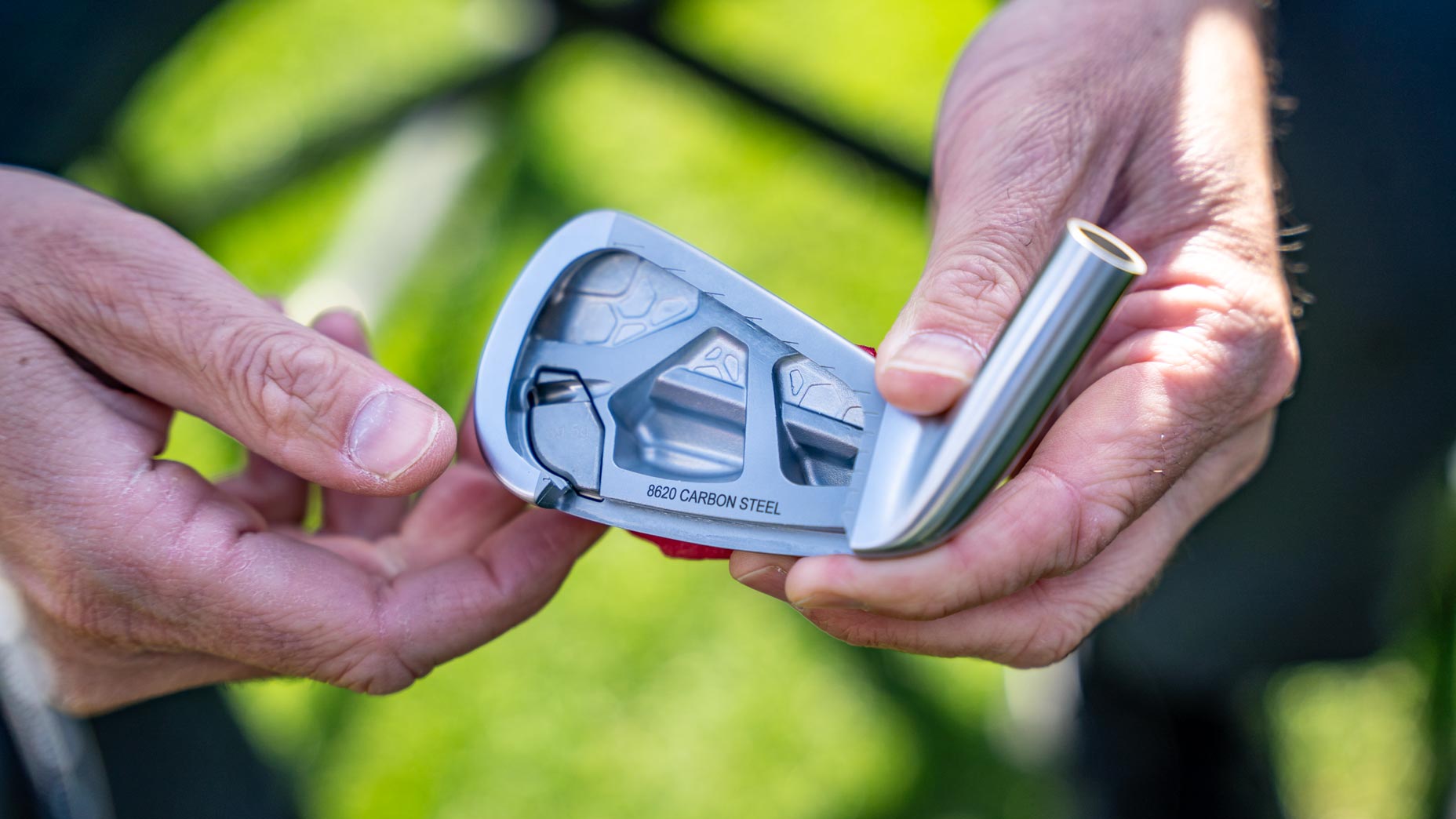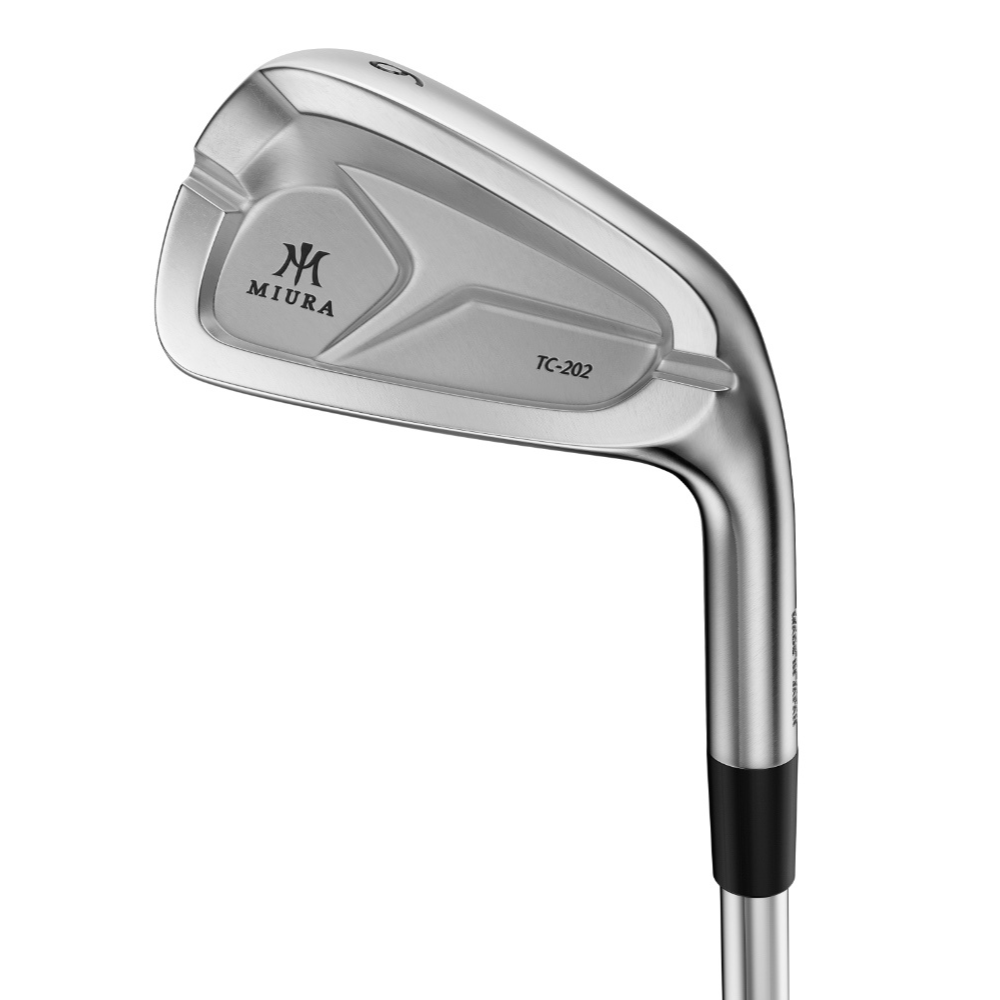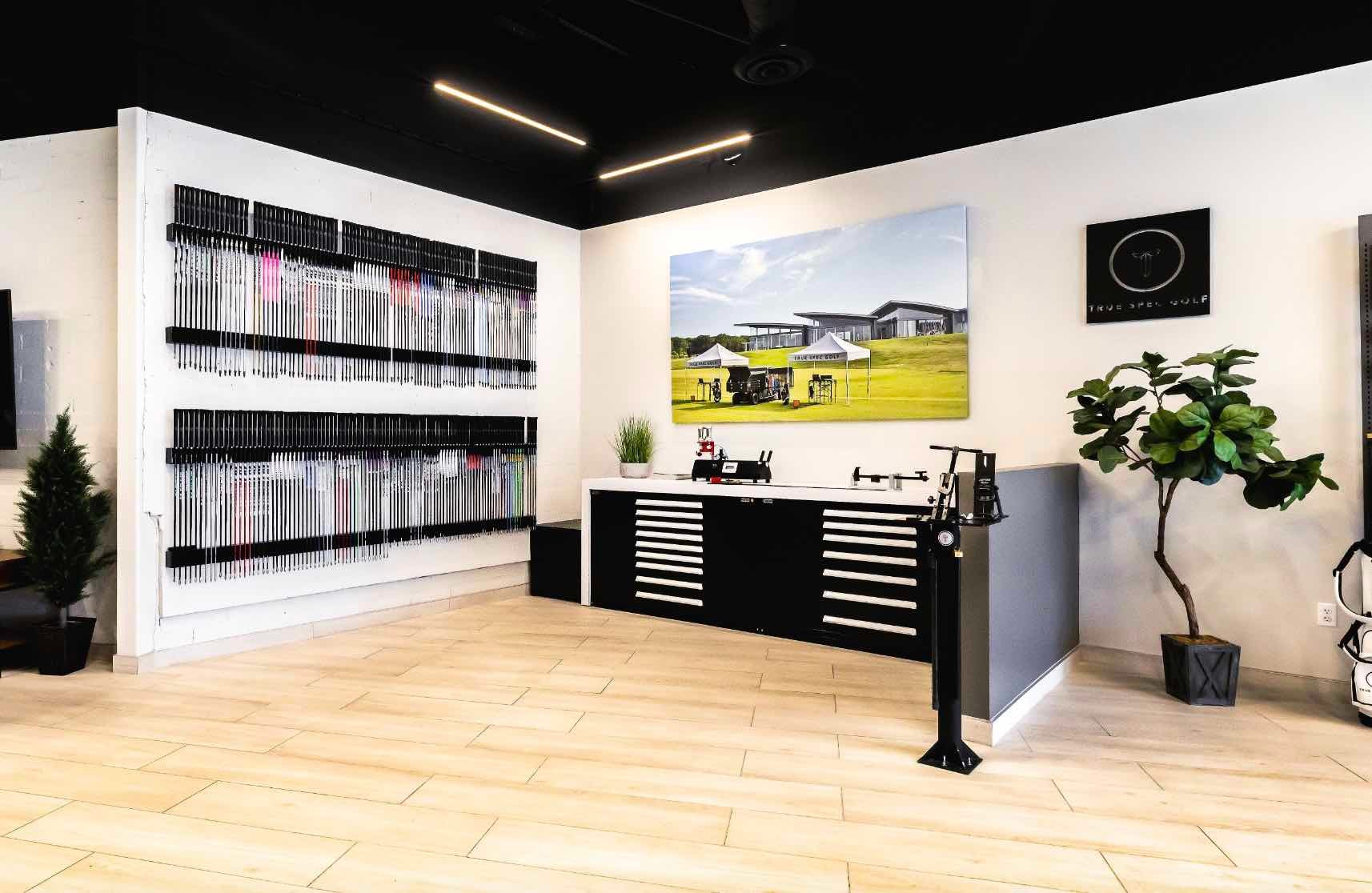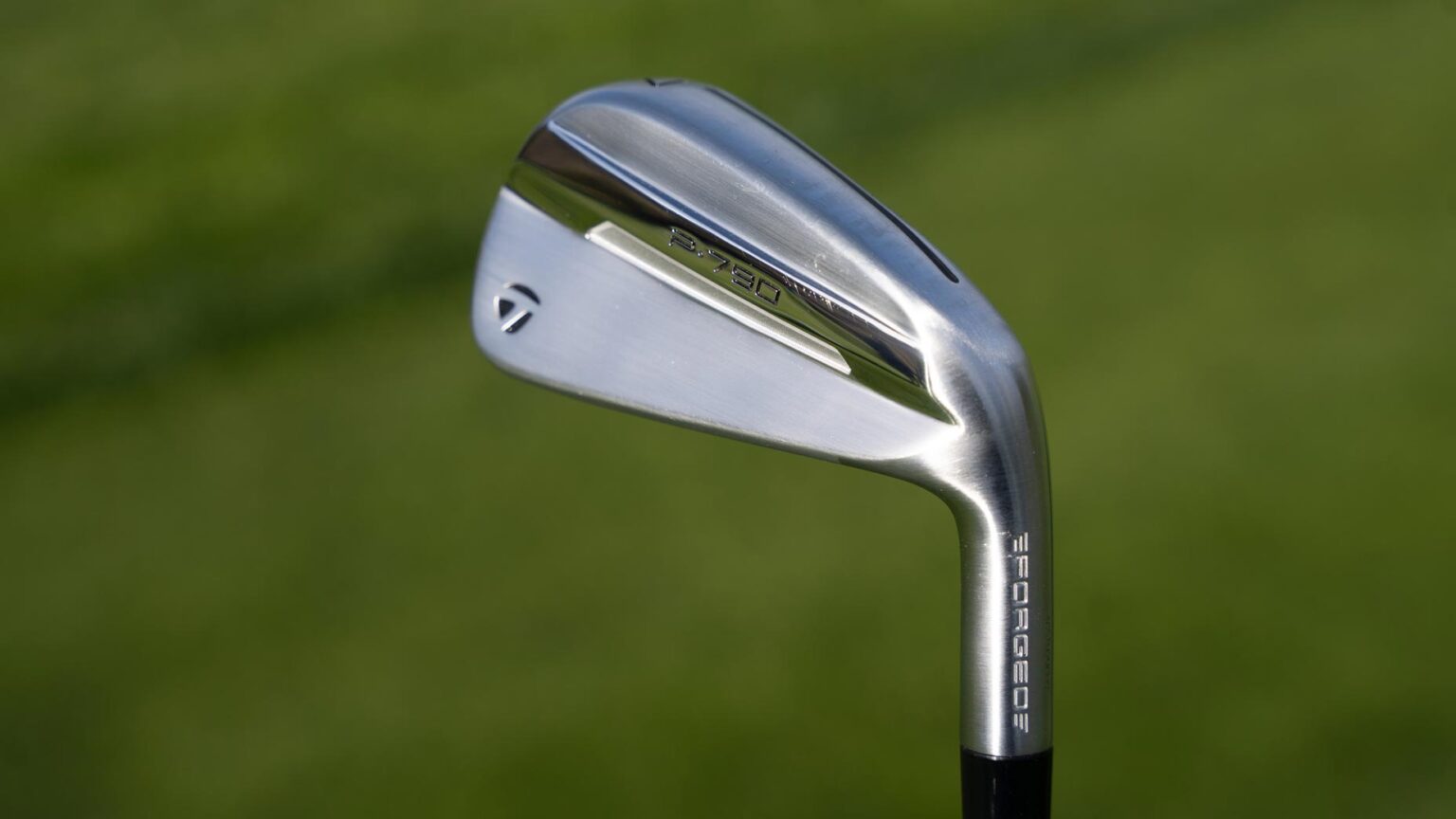It’s no secret that some golfers prefer the traditional look of a blade iron. The small topline, sleek design, and the underlying implication that when you see a set of blades hanging out of a bag, that person is a good player.
However, all too often, someone comes into a fitting at True Spec saying they like the look of blades, or “I’ve always played blades,” but the numbers on the launch monitor tell a contrasting story.
These days, golf club manufacturers are blending the desired look and feel of a player’s style iron with the forgiveness needed for golfers who need it.
According to the USGA, the average handicap for male golfers is a 14.2 index, and 28.7 index for females. This average golfer will hit about 23 percent of greens in regulation, which is about four greens per round. When they do hit the green, the average proximity to the hole is about 35 feet. These two statistics, based on iron play and approach shots, indicate the average golfer needs more forgiveness with their irons to hit more greens and get the ball closer to the hole.
What is a blade iron?
A traditional blade iron, also called a muscle back, is designed for low-handicap, scratch and professional golfers who consistently strike the ball in the center of the face. Typically, blades are made from one solid piece of steel and pressed into shape.
The center of gravity design sits right behind the center for great feel and workability when struck properly. With little to no mass anywhere else in the clubhead, mishits result in loss of ball speed and control over the golf ball. These low-forgiving irons make it very difficult to hit consistently for the average golfer.
More forgiving clubs may lack the control and workability that a blade offers, but these clubs are designed for players who do not consistently strike the center of the face. The design of more forgiving clubs distributes weight around the entire perimeter, as well as toward the toe of the club to keep the clubface pointed to the target.
With the weight spread out, this allows the club to resist twisting at impact to keep the face pointed square to the target. Moving the center of gravity farther back away from the face is another key design component, as that helps launch the ball much easier with contact higher or lower on the face. These key design aspects make a club forgiving, but also increase the size of the club and look less appealing.
How are golf club irons making good-looking irons more forgiving?
Most manufacturers make a good-looking iron that is plenty forgiving for most golfers. One great example we can focus on to dive a little deeper into is one of the most popular irons on the market: TaylorMade’s P790.
TaylorMade 2025 P790 Custom Irons
REVOLUTIONARY FORGED FEEL
More Speed, More Consistency
Increased Distance with Improved Gapping
FLTD CG™ – Shaped for Elegant Performance
FEATURES
Enhanced Feel & FeedbackSubstantially improved feel was a key focus when designing the 2025 P·790. Individual head optimization and advanced modal analysis, combined with SpeedFoam™ Air, deliver best-in-class forged feel with an explosive sensation at impact.
Faster Face, Greater SpeedThe 2025 P·790 introduces an all-new ultra-high-strength, high-speed forged face material (4340M), which is 20% stronger than previous generations. This increased strength enables a thinner face, faster ball speeds, and a sweet spot up to 24% larger.*
*Comparison vs. 2023 P·790 7 iron.
Optimized CG for Precision & DistanceA faster 4340M face, individual head optimization, and FLTD CG™ technology precisely position the center of gravity (CG), delivering increased carry distances with ideal launch and spin for improved gapping throughout the set.
In 2025, the long irons feature an even lower CG for enhanced launch and playability, while the scoring clubs have a higher CG to improve spin rates and control. FLTD CG™ strategically shifts the center of gravity from low in the long irons to progressively higher in the short irons for optimal performance.
Refined Aesthetics & Turf InteractionThe all-new P·790 boasts a thinner topline for a cleaner look at address and an increased sole radius with a progressive leading edge. This design enhances turf interaction and promotes more consistent impact locations.
View Product
ALSO AVAILABLE AT: PGA Tour Superstore, TaylorMade
In a recent roundtable discussion I sat in with another major golf manufacturer, the P790 was described as a “workhorse” for TaylorMade because it fits what a lot of golfers are looking for: an iron that looks good hanging out of their bag, while still delivering forgiveness and performance to help their game.
It is not the slimmest topline on the market, but it certainly looks more like a player’s iron than most game improvement or cavity back irons. Flipping the club over to the sole, the sole radius is increased and it also features a progressive leading edge design, which helps players get through the turf easier and more consistently.
The face of the P790 is made of forged steel to deliver the soft, pure feel players love about a forged iron. This is a multipiece construction, which includes TaylorMade’s SpeedFoam Air to help improve feel.

Jack Hirsh/GOLF
The other key aspect for the multipiece construction is the FLTD CG design and weighting. Each iron throughout the set features a different amount of tungsten placed in different areas of the club. The long irons feature the most tungsten, up to 40g, located lower toward the center of the club to lower the overall center of gravity, which increases launch and spin conditions, as well as forgiveness.
The mid irons feature less tungsten, more toward the toe of the club, to focus on club stability. This keeps the CG in the middle of the club for a good balance of forgiveness and workability.
The short irons feature no tungsten, which places the CG higher in the club for the most amount of control and ability to flight down shots as necessary. It is very similar to playing a combo iron set, more forgiving in the long irons and workability in the short irons.
With the forgiveness-focused technology packed under the hood of a player’s inspired look, the P790 is one of the most asked-for irons at True Spec.
What better player clubs are designed for forgiveness?
Manufacturers like TaylorMade make a forgiving iron look more appealing, but this can also apply to the opposite side of the spectrum. Let’s look at a player’s specific iron designed for more forgiveness: the Miura TC-202.

Miura TC-202 Custom Irons
View Product
The TC-202 is the new version of Miura’s flagship TC-201 iron. It carries on Miura’s tradition of blending muscle back precision with cavity back forgiveness. This type of iron falls into the category of a player’s cavity back, which is for a better player, maybe a single-digit handicap, who can work the ball and still desire feel, but may not be a tour-level ball striker.
Miura prides itself on precision craftsmanship. The quality of the steel they use to forge their one-piece irons to the tightest manufacturing tolerance in the industry (+/- 0.5g for each clubhead) truly separates Miura from the rest.
Unlike the multipiece construction of a P790, the TC-202 is forged from one single piece of premium soft carbon steel, delivering the unmatched feel of a forged iron.
The critical enhancements in the TC-202 are the progressive T-Weight Bar system and Variable Depth Cavity. Similar to the idea behind the FLTD CG in the P790, these two design features move the center of gravity to redistribute weight gradually throughout the set for optimal trajectory and feel in each iron. The CG sits lower in the long irons for easier launch conditions, and progressively gets higher down to the short irons for more workability and control.

True Spec Golf Club Fitting
With 70,000+ clubhead and shaft combos, True Spec Golf will custom fit and build you a precise set of clubs.
Inspired by the toe grind in the Miura KM-700, the TC-202 sees a weight shift toward the toe to promote a square clubface at impact.
Miura’s Y-Grind sole helps deliver the leading edge through various turf conditions, without changing the effective bounce of the club. While the TC-202 does not feature the same subtle heel and toe relief as the Y Grind found on Miura’s Forged Wedge series, it still allows the club to rest in a neutral position at address. This instills confidence that the player can aim the clubface directly at the target before taking back the club.
Bottom Line
Whether it is a more forgiving club designed to look more like a player’s iron than cavity back, or a player’s inspired iron with more forgiveness than a true muscle back blade, manufacturers are blending the gap between looks and performance. Whichever type of club a player is looking for, it is always recommended to see a certified Master Fitter at True Spec to determine which irons will be best for you.
Want to find the best set of irons for your game in 2025? Find a club-fitting location near you at True Spec Golf.
Read the full article here



